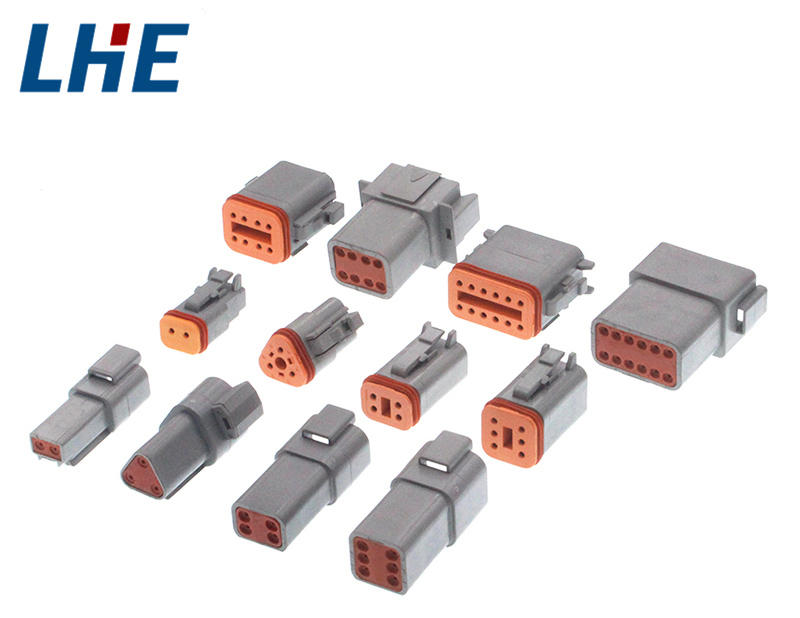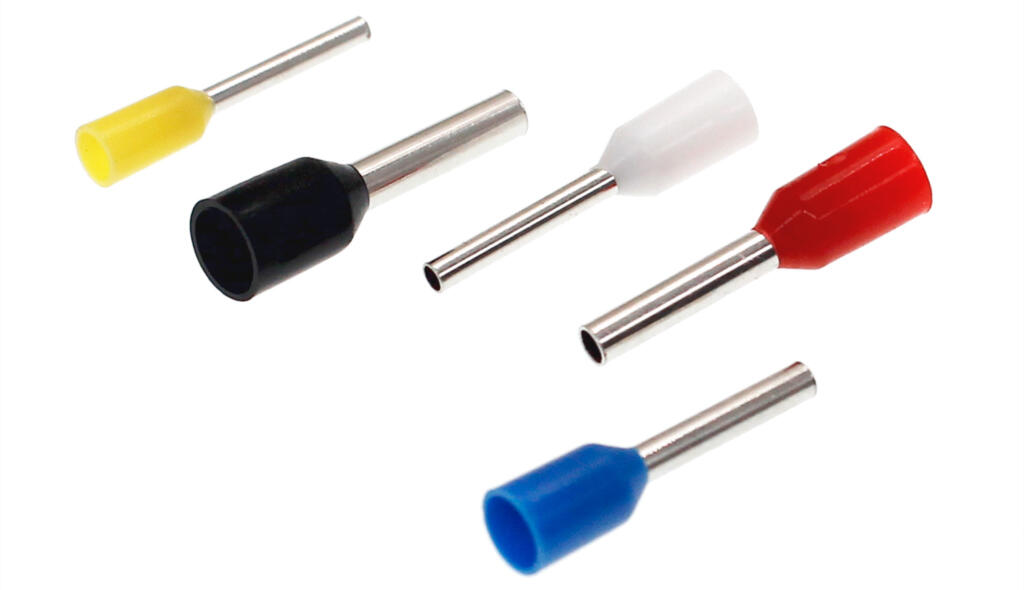Wire Terminals and Connectors: The Essential Guide for Reliable Electrical Connections
Whether you’re wiring an automobile, building a control panel, setting up an industrial machine or doing home DIY, wire terminals and connectors are among the unsung heroes of the job.
They quietly ensure that electricity flows where it should, safely and efficiently, even under vibration, heat, moisture or mechanical stress. But use the wrong type—or install it poorly—and you may end up with high resistance, overheating, intermittent failure or even a fire hazard.
In this guide, we’ll walk through what wire terminals and connectors are, how they differ, how to select the right one for your job, and best practices for installation and maintenance.


What Are Wire Terminals and Connectors?
Wire Terminals: The Basics
A wire terminal is the physical interface where a conductor (wire) connects to a device, another wire, a stud or a terminal block. It provides both a mechanical and electrical connection, designed to ensure a secure path for current and to resist loosening, corrosion or vibration.
Wire terminals may be crimped, soldered, screwed, or pressed onto the wire, depending on the design. They are widely used in automotive, industrial, residential and electronics systems.
Connectors: Making Systems Modular
A connector, in this context, is a device that joins two or more conductors or components together in a reversible (or semi-reversible) fashion. Connectors may include housings, mating plugs/sockets, pins, terminals and locking mechanisms.
In practical wiring environments, the term “connectors” often covers wire-to-wire and wire-to-device connections—such as butt connectors, quick-disconnect blades, harness plugs, terminal blocks and more.
Why the Distinction Matters?
When you’re choosing parts for your wiring job, understanding whether you need a “terminal”, a “connector”, or both helps ensure you pick the correct component for reliability, safety and ease of maintenance.


Why Good Terminals & Connectors Matter?
Electrical engineers often say that the weakest link in a wiring system is not the wire itself, but the connections. A poorly crimped terminal or a loose connector can raise resistance, generate heat, allow corrosion and lead to failure.
Here are a few reasons why the right choice matters:
- Ensures consistent conductivity and minimal voltage drop.
- Prevents loosening under vibration or mechanical shock.
- Reduces risk of arcing, overheating, insulation failure or fire.
- Simplifies maintenance, troubleshooting and future modifications.
In many industrial or automotive applications, a failed connector or terminal can mean costly downtime, so specifying and installing them properly is a smart investment.


Common Types of Wire Terminals and Connectors
There are many varieties — it’s worth becoming familiar with the most frequently used types, what they’re for and where they excel.
Terminal Types
Some of the major terminal types include:
- Ring terminals: Circular lug that bolts to a stud or screw. Highly secure under vibration.
- Spade (fork) terminals: Fork-shaped connection that slides under a screw/bolt and allows easier removal.
- Butt connectors: Barrel-shaped terminal that joins two stripped wires end-to-end and is crimped.
- Bullet connectors: Male/female snap-together cylindrical terminals are frequently used in automotive or modular wiring.
- Quick disconnects (blade terminals / FASTON): Flat blade and receptacle style for fast connection/disconnection.
- Screw terminals / terminal blocks: Wires are clamped by screws or springs into blocks or strips; widely used in industrial panels.
Connector Types
Connectors often incorporate multiple terminals and additional features:
- Wire-to-wire connectors: Join wiring harnesses or extend wires.
- Wire-to‐board (PCB) connectors: Terminals embedded into a housing that mates with a printed circuit board.
- Waterproof/outdoor connectors: Designed with seals, locking rings and special materials for marine, automotive or exterior use.


How to Choose the Right Terminal or Connector for Your Project?
Selecting properly involves considering multiple variables: wire size, current load, environment, installation method and future serviceability. Let’s break this down.
Matching Wire Gauge and Current Load
One of the most important factors is ensuring the terminal is suitable for both the wire gauge (AWG or mm²) and the amperage in your circuit. Installing a terminal undersized for your wire gauge or the current can lead to overheating or failure.
Environmental & Mechanical Considerations
Ask: Will the connection be exposed to moisture, dust, corrosive chemicals, vibration or thermal cycling? If yes, choose terminals/connectors with insulation, heat-shrink jackets, seals or materials rated for those conditions.
Installation and Maintenance Needs
Consider how often the connection must be accessed, maintained or changed. For frequent disconnections, quick-disconnect or blade connectors might be ideal. For permanent or high-vibration applications, ring terminals or sealed crimp connectors may be better.
Compliance and Standards
Many industries require connectors or terminals that meet UL, CSA, IEC or MIL-spec standards. Using certified components helps ensure safety and compatibility.


Installation Best Practices: Ensuring Reliable Connections
- Even the highest-quality terminal or connector will fail if it’s installed poorly. Here are the key best practices:
- Always strip wires to the correct length—no nicked conductors, no excess bare wire.
- Use the right crimping tool (or soldering procedure) specified for the terminal/connector. Mixing tooling brands or using the wrong die may cause unreliable results.
- If using insulated or heat-shrink terminals, ensure the insulation covers the conductor fully and that any external jacket properly overlaps.
- For screw or terminal block connections, ensure screws are tightened to the manufacturer’s torque specs and no stray strands of wire are left exposed.
- In high-vibration areas, use locking features, rated vibration-resistant terminals and consider secondary support (cable ties, strain relief).
- Label wires and document connections: it helps with troubleshooting, maintenance, and future upgrades.
Troubleshooting Common Issues
Here are some typical failure modes and how to prevent or fix them:
Increased Resistance / Heating
Often caused by loose terminals, improper crimping, or conductor strands not fully inserted. Check connections, re-crimp, and verify the terminal is rated for the wire gauge and current.
Corrosion or Moisture Intrusion
Terminals in damp or outdoor environments may degrade. Use sealed, heat-shrink or stainless-steel terminals and ensure proper insulation and strain relief.
Vibration-Induced Loosening
In mobile or industrial equipment, repeated vibration can loosen connections. Use vibration-rated connectors or apply locking washers, thread-lock compounds or connectors with locking tabs.
Disconnection or Intermittent Contact
Most often due to the wrong connector type, improper mating, or wear. Choose connectors designed for repeated cycles if frequent disconnects are needed, and inspect regularly.


Why “Wire Terminals and Connectors” Should Be a Priority?
Well-designed terminals or connectors can improve safety, enhance reliability, reduce maintenance, and extend system life. Investing time in selection and installation will result in longer uptime and lower costs.
In industrial, automotive, marine, or building automation systems, the losses from connection failures can far outweigh the cost savings from using cheaper components. Therefore, understanding the various terminal/connector options and applying best practices is crucial.
Conclusion
From the simplest ring terminal to complex sealed modular connectors, wire terminals and connectors play a pivotal role in ensuring your electrical systems perform reliably. By matching the right type to the wire size, current load, environment and usage pattern — and installing them with care — you’re building quality from the ground (or wire) up.







